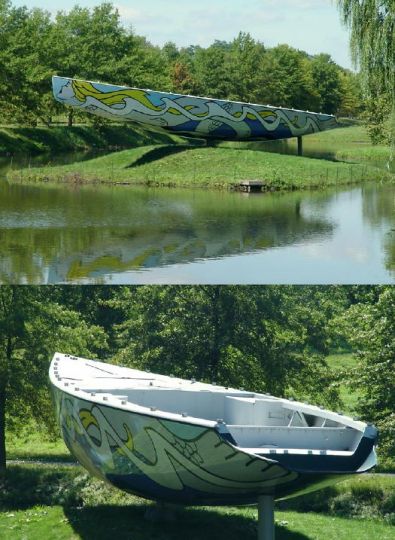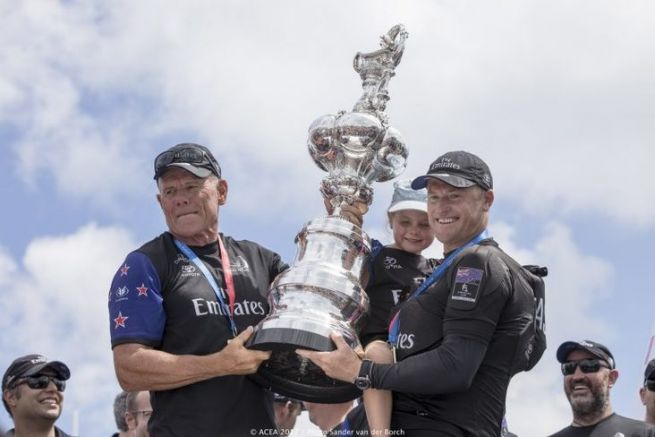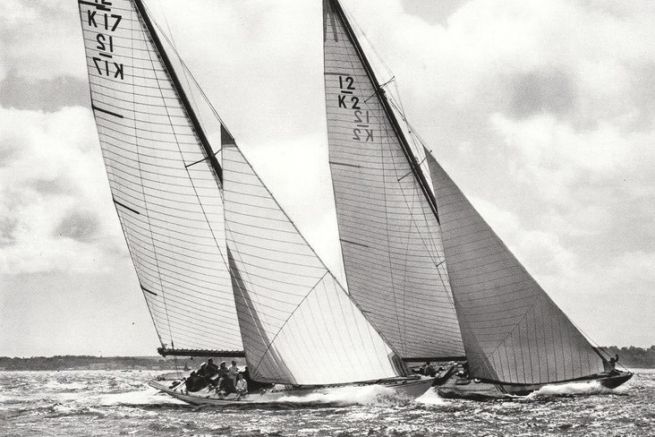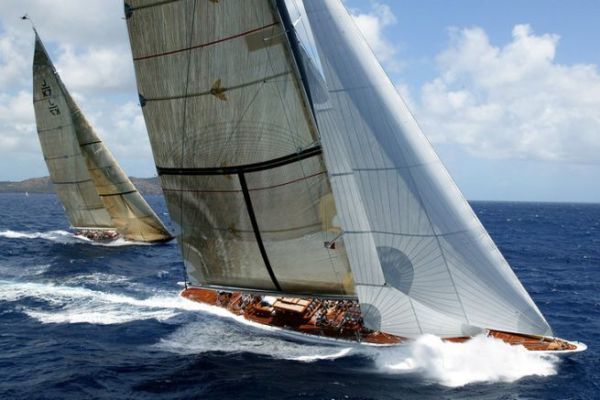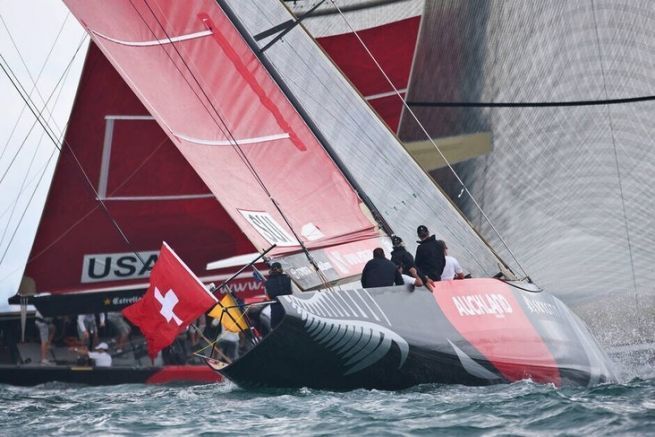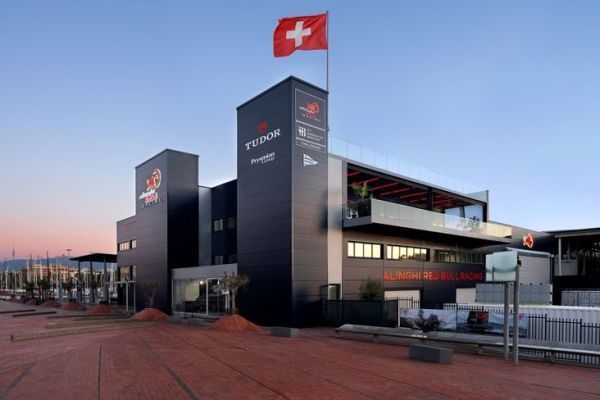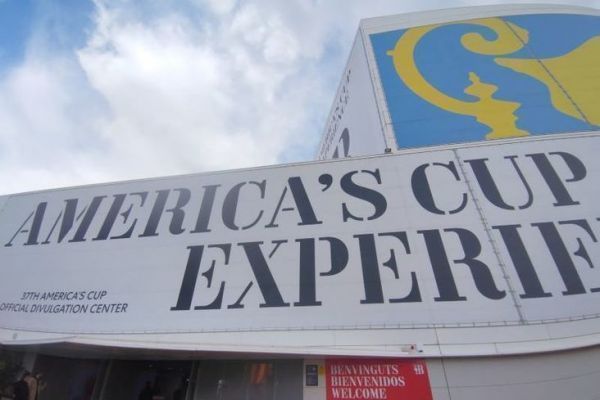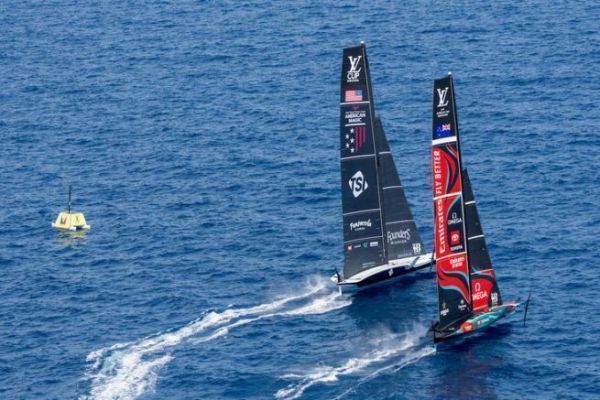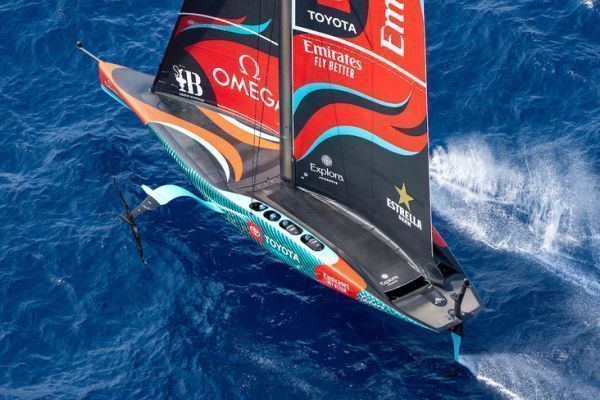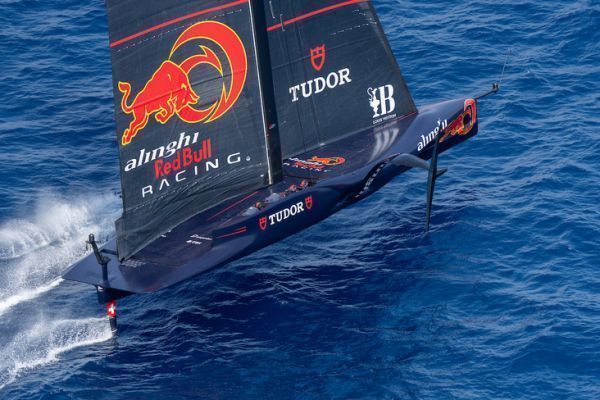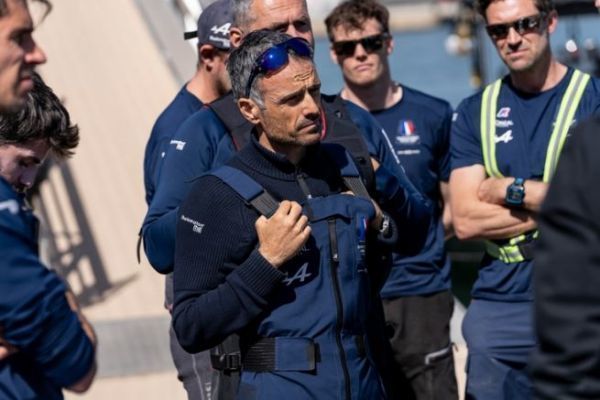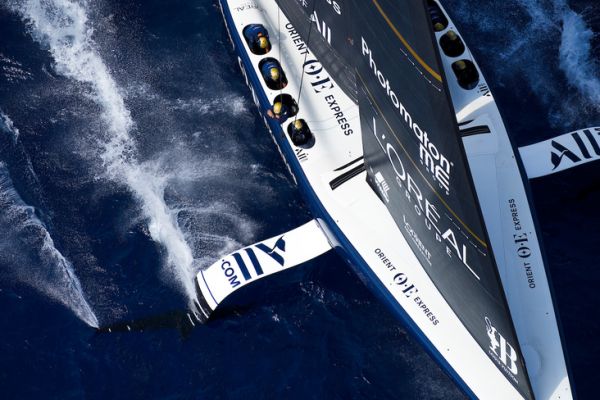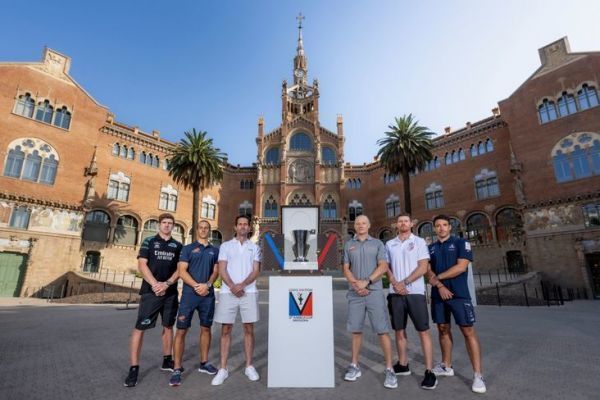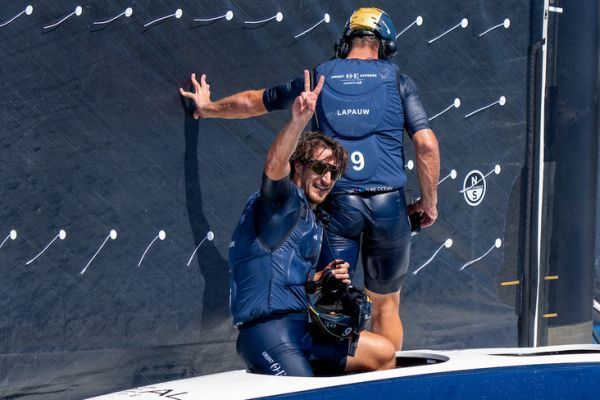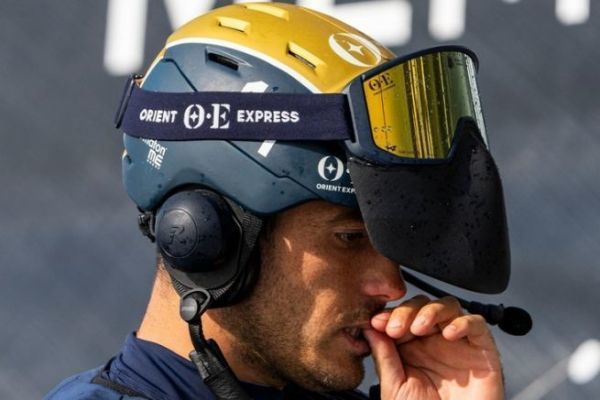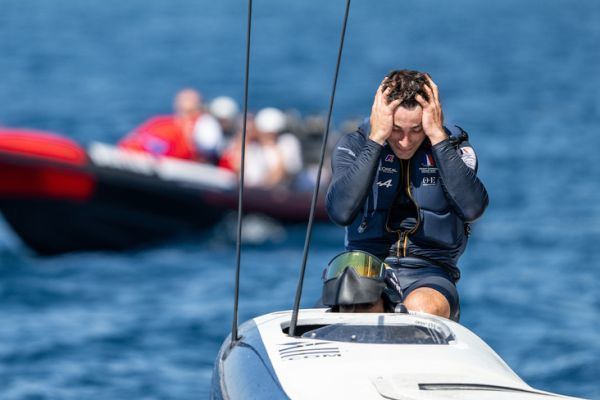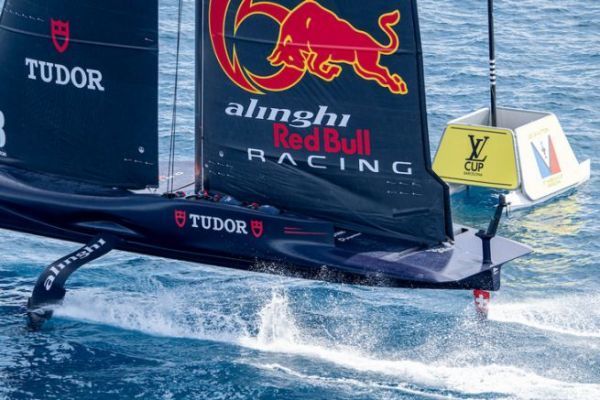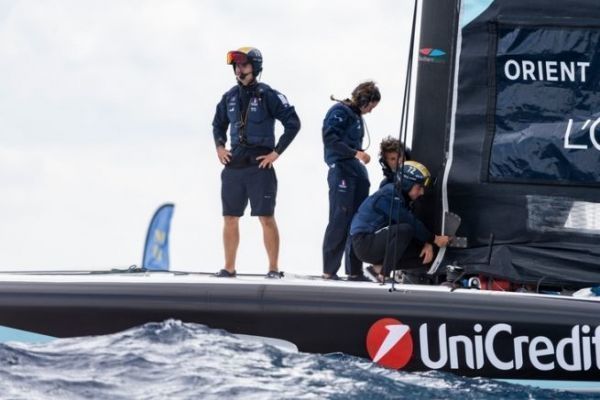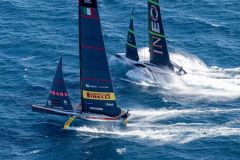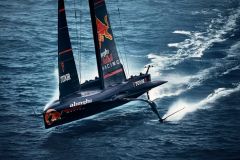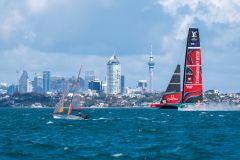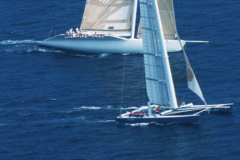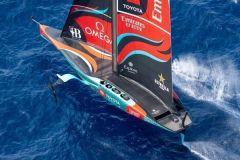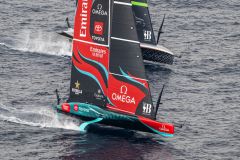A new gauge to replace the 12mJI
In order not to see a repeat of the fiasco of the 1988 edition, where the Cup saw an 18m catamaran competing against a monohull of nearly 40m, the IACC decided to draft a new rule of measurement. Intended to replace the 12mJI in place since 1958, the ACC (America's Cup Class) rule was introduced for the 1992 edition.
The ballast ratio is staggering, since an America's Cup Class boat, which measures around 25 m, displaces around 25 tonnes, for a ballast of 20 tonnes! The whole boat is propelled by a mast of about 35 m, which allows to send 350 m2 upwind and 750 m2 downwind. The crew is made up of 17 sailors.

The French were the first to launch an America's Cup Class boat in 1989 in Sète, which was christened F1 and skippered by Marc Pajot.
Five editions raced in America's Cup Class
The United States, New Zealand and Switzerland will be the winners in the five editions run in ACC. France reached the semi-finals twice with Marc Pajot in 1992 and Bertrand Pacé in 2000.

Over the years, the hulls of the Class Amercia have been refined from 5.50 m to 4.50 m on the main beam. The sets of sails have become more aerodynamic and the omnipresence of carbon has allowed weight savings on the hulls.
This lightweight race reached its limits in 1995, when the Australian syndicate's boat, One Australia, sank in the middle of the regatta. Sailing in 20 knots of wind, One Australia folded in half on an upwind tack.
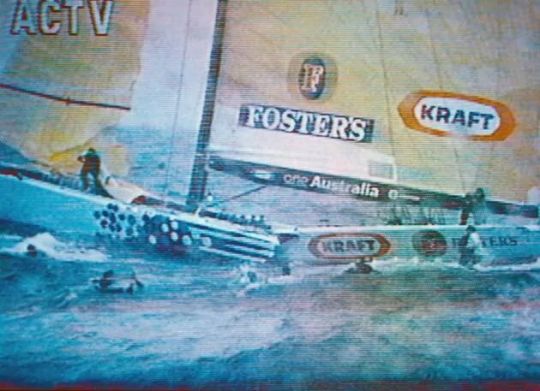
The crew had just enough time to jump into the water before watching in disbelief as their America's Cup Class yacht sank in less than two minutes in 200 metres of water. In 2000, the Young America also folded in half in the middle of the regatta, but the crew was able to bring the remains of the hull back to safety.
The emergence of the Kiwis
The ACC rule has allowed Team New Zealand to fully express its talents, winning the Cup for the first time in 1995, with Peter Blake at the tactical helm and Russell Coutts at the helm.
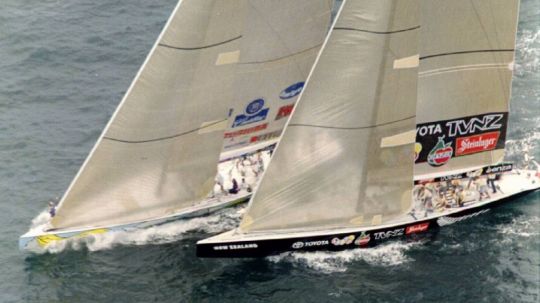
In five participations, Team New Zealand has won the Cup three times, demonstrating the potential of this small country in the antipodes, where sailing is as important as rugby.
The quintessence of Match Racing
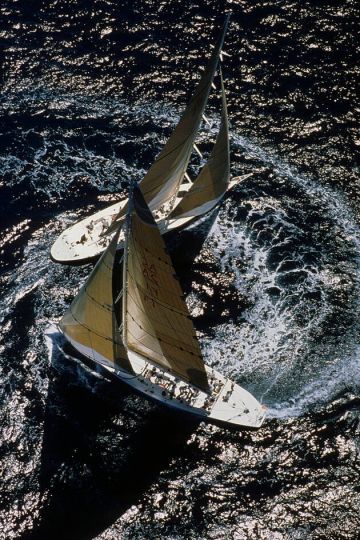
As usual, the Cup has brought together the best talents of the moment in the best positions. The rear cells were occupied by all the Match Racing champions, and this new gauge, faster than the 12mJI, allowed the helmsmen to put on a show during the start phases.
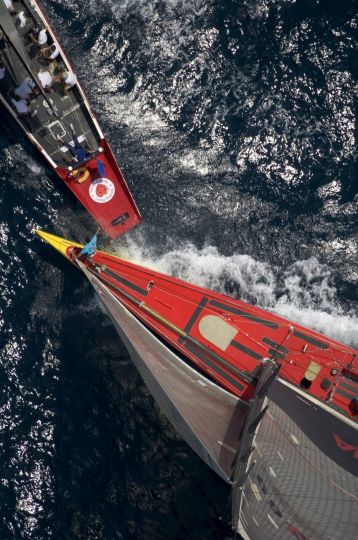
The most important thing was not to get away as quickly as possible, but to control your opponent. The ACC was the perfect venue for some great circus shows.
All in a frankly masculine atmosphere. In contrast to the world Match Racing circuit, women are poorly represented on the Cup. Apart from the Amercia 3 syndicate in 1995, no other women's crew has competed in the Cup.
2007: The end of the America's Cup Classes
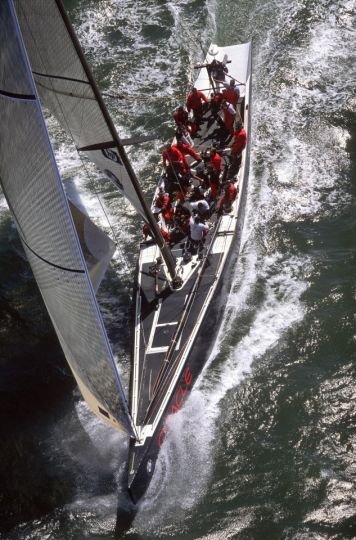
Up until its last regatta, the ACC Rule has been the scene of incredible passes and showcased a match race level that has not been seen since. In the last America's Cup Class regatta, Alinghi won the Cup by crossing the line a second ahead of Team New Zealand, ending a 15-year history with panache.
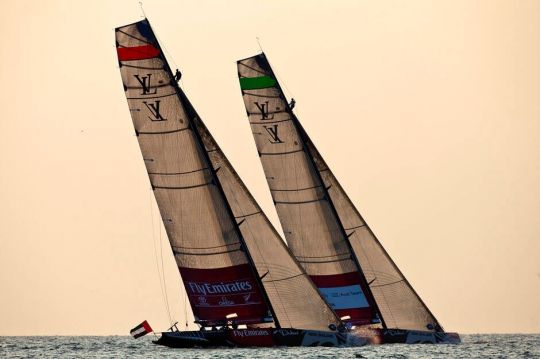
The multihulls will then go on to win the Cup for three editions, before the monohulls with hydrofoils appear in 2020.
What happened to the America's Cup boats?
Out of a hundred boats built, only a handful are still sailing. The high-tech construction of an Amercia Class and their prohibitive maintenance costs make it utopian to keep them in good sailing condition.
In France, only the hull of Team New Zeland 57 is on display on the forecourt of the cité de la voile in Lorient. Other hulls live out their old age in museums, such as Black Magic.
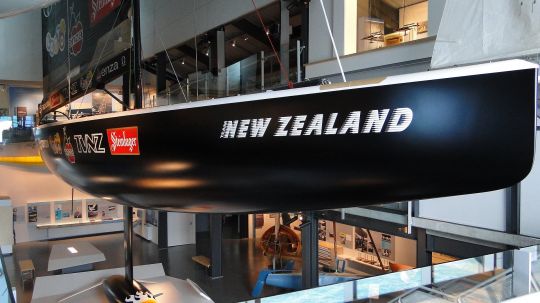
Or as a horticultural work of art, like Young America.
